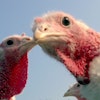
Highly pathogenic avian influenza (HPAI) has struck in Peru after a two-month absence.
The latest instance involves a commercial egg laying flock in Chepén, according to a report from the World Organisation for Animal Health (WOAH).
WOAH has notified on February 12 that high mortalities had been noticed at the farm, which had a flock of 27,000 chickens. Tracheal swabs were collected, and those samples tested positive for HPAI of a subtype H5.
According to the WOAH report, about 4,000 birds in that flock had died. The remaining 23,000 were depopulated.
Other control measures put in place include movement control, zoning, surveillance, quarantine, inactivating the pathogenic agent in products or byproducts, disinfection, official destruction of animal products and official disposal of carcasses, byproducts and waste.
The last time HPAI had been confirmed in Peruvian poultry was December 11, 2023, WOAH stated.
While WOAH listed the source of the infection as “unknown or inconclusive,” HPAI has taken a toll on wild birds in Peru, claiming well more than 500 pelicans alone.
In October 2023, Maria Eliana Icochea D’Arrigo, head of the avian pathology laboratory at the Universidad Nacional Mayor de San Marcos, said she believed Peru could be the country in South America that is the most vulnerable to HPAI. With a long coastline, there are plenty of points of entry for the virus to spread via migrating waterfowl, she said. She also stressed that with HPAI so prevalent in Peru’s wild bird population, it makes HPAI’s risk for poultry farmers “impossible to avoid, even with having the most extreme biosecurity measures.”
View our continuing coverage of the global avian influenza situation.



















